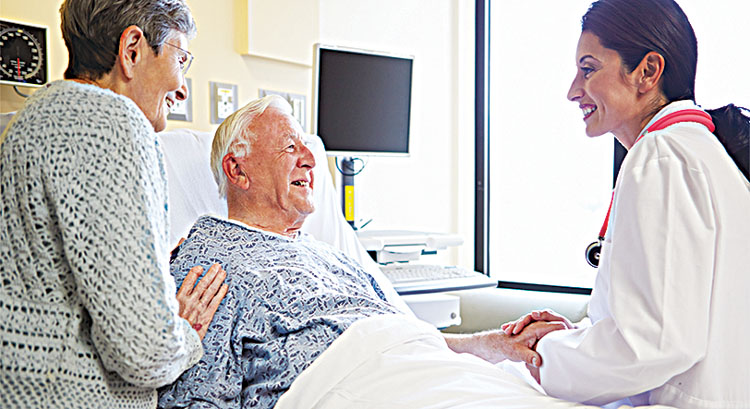Treating a stroke can be time-sensitive as the time frame for treatment is comparatively restricted. Sri Ramakrishna Hospital provides a detailed outlook on Stroke Management and the steps to save a stroke patient’s life. A stroke in the human body occurs when the supply of oxygen and blood is interrupted due to occlusion or rupture of a blood vessel in the brain. This eventually causes the death of brain cells. As a result of inadequate oxygen supply and cell death, it can lead to brain damage that could be irreversible and even lead to death.

The Management of Ischemic Stroke
Acute ischemic stroke (AIS) is one of the most commonly reported strokes. AIS occurs when there is an interruption in the oxygen supply due to a clot in the blood vessel. AIS is considered a medical emergency where every second is important for recovery. Medical reports state that every minute two million neurons die immediately after the onset of ischemic stroke. Every advancement in the medical field has been a boon to mankind. Similarly, stroke treatment has also undergone evolution to help people recover from a deadly situation. The two most widely proven and accepted treatments are:
IVT- Intravenous Thrombolysis
EVT- Endovascular Treatment (i.e Mechanical Thrombectomy)
Though before the introduction of these methods, Nihilism was a widely practiced method in the treatment of stroke. Before you visit a hospital for stroke treatment, the basic identification of stroke is crucial as this can help one in taking immediate action.
When one is suspected of suffering from stroke and the mentioned signs show up, it is a paramount to reach out to the emergency department. Within four and a half hours, the diagnosis and treatment have to be provided. Here’s a runway of sixty minutes on what happens after the patient is taken to an emergency ward.
• In about ten minutes, the patient is attended to by an emergency physician.
• In about fifteen minutes, the patient is examined by the Neurologists.
• In about twenty-five minutes, the diagnosis involving on contrast CT brain scan and MRI is performed following the protocol.
• In forty-five minutes, the results of the scan usually come through and the situation is analyzed, and the treatment is also discussed.
• In sixty minutes, the patient is initiated with thrombolytic therapy.
In case a stroke-affected person is brought to the emergency care within the golden window of four and a half hours, for breaking or dissolving the clot, the thrombolytic method is adapted where a drug is injected intravenously immediately after the diagnosis. In cases where the clot is in the large vessel of the brain then along with the thrombolytic method, mechanical thrombectomy is also initiated that can help in the clot removal through suction. If the patient is brought to the hospital after the golden window of the onset of stroke, in such cases up to 24 hours a direct thrombectomy is planned if the occlusion is in the large vessel.
In posterior circulation stroke condition, the golden window is extended up to six hours for thrombolysis and up to twenty-four hours for thrombectomy. With both the treatment options available at Sri Ramakrishna Hospital, the medical experts are present round the clock, to treat ischemic stroke and help people to get back to their normal bodily functions without any severe disabilities. Stroke can be highly fatal and the severity of damage can be irreversible unless the patient is brought to the hospital in time. Neurologists at Sri Ramakrishna Hospital (https://www.sriramakrishnahospital.com) offer a lot of treatment options to help overcome the stroke and its complications. Visit the hospital to consult with the Best Neurologists in Coimbatore that are experts in their respective medical field. In the event one lives far away, they provide online video consultation for those who require an immediate consultation for their health issues. Doctors are available round the clock to provide effective treatment. Sri Ramakrishna Hospital’s services are at par with global benchmarks, ensuring that people get the treatment they need.

